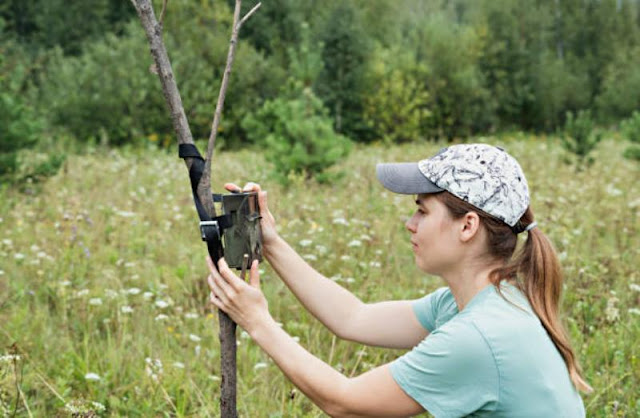Wildlife conservation and monitoring technology
Wildlife conservation and monitoring technology
Wildlife conservation and monitoring have entered a new era
with the integration of advanced technologies. These innovative tools and
techniques are helping scientists, conservationists, and governments better
understand, protect, and preserve our planet's diverse ecosystems and the
species that inhabit them. In this article, we will explore some of the most
impactful technologies used in wildlife conservation and monitoring and their
contributions to safeguarding biodiversity.
1. GPS and Satellite Tracking
Global Positioning System (GPS) and satellite tracking
technologies have revolutionized the way wildlife is monitored. By attaching
GPS or satellite transmitters to animals, researchers can track their movements
in real-time and collect crucial data on migration patterns, habitat usage, and
population dynamics. This information is invaluable for developing conservation
strategies and protecting species at risk.
For example, scientists have used GPS tracking to monitor
the movements of marine animals like sea turtles and sharks, helping identify
critical habitats and migration routes that require protection. Similarly,
land-based animals, such as elephants and wolves, can be tracked to mitigate
human-wildlife conflicts and inform land-use planning.
2. Camera Traps
Camera traps are remote, motion-activated cameras that
capture images or videotapes of wildlife in their natural habitats. These
unobtrusive devices have become essential tools for monitoring elusive and
nocturnal species. They are used to document species presence, behavior, and
population estimates.
Camera traps have yielded incredible insights into the lives
of animals, from documenting the behavior of rare big cats like snow leopards
to studying the nighttime activities of forest-dwelling creatures. Their
non-invasive nature minimizes human disturbance and provides data crucial for
conservation planning.
3. Remote Sensing and GIS
Remote sensing technology, often coupled with Geographic
Information Systems (GIS), allows conservationists to analyze and visualize
data related to habitat change, deforestation, land use, and climate patterns.
Satellite imagery and aerial surveys provide a bird's-eye view of ecosystems,
enabling scientists to monitor changes over time.
These tools are instrumental in assessing the impact of
human activities on wildlife habitats and can guide conservation efforts. For
example, remote sensing can detect deforestation in real-time, helping
authorities combat illegal logging and protect vital forest habitats for
species like orangutans and tigers.
4. Acoustic Monitoring
Acoustic monitoring involves the use of audio recording
devices to capture sounds produced by wildlife. This technology is particularly
useful for monitoring vocal species, such as frogs, birds, and cetaceans. By
analyzing sound recordings, researchers can identify species, estimate
population sizes, and monitor breeding activity.
Acoustic monitoring has proven invaluable for tracking
endangered species like the vaquita, a rare porpoise, in the Gulf of
California. It also aids in studying the effects of noise pollution on marine
ecosystems and understanding the intricate communication networks among
animals.
5. Drones and UAVs
Unmanned Aerial Vehicles (UAVs), frequently known as drones,
are versatile tools for wildlife monitoring. They can provide aerial imagery,
conduct surveys in challenging terrains, and monitor wildlife without human
interference. Drones are especially useful for monitoring large mammals and
marine life.
In anti-poaching efforts, drones equipped with thermal
imaging cameras are deployed to detect illegal activities and poachers in
real-time, helping protect species like rhinos and elephants from the illegal
wildlife trade. Drones are also used to monitor nesting sites of seabirds on
remote islands and assess the health of coral reefs.
6. DNA Analysis and Genetic Monitoring
Advancements in DNA analysis techniques have opened up new
avenues for wildlife conservation and monitoring. Non-invasive genetic
sampling, such as collecting hair, feces, or feathers, allows researchers to
identify species, track individuals, and estimate population sizes. DNA
analysis also helps in understanding genetic diversity and relatedness among
populations.
Genetic monitoring has played a crucial role in the
conservation of elusive species like the Amur leopard and snow leopard. By
analyzing genetic data, scientists can make informed decisions about
translocation, captive breeding, and habitat restoration to bolster the genetic
health of endangered populations.
7. Artificial Intelligence (AI) and Machine Learning
AI and machine learning algorithms are more and more being
used to process and analyze the vast amounts of data collected in wildlife
conservation efforts. These technologies can automate the identification of
species in camera trap images, track animal movements in satellite data, and
predict poaching hotspots based on historical data.
By leveraging AI, conservationists can efficiently process
data, identify trends, and allocate resources more effectively. This technology
has the probable to enhance our understanding of complex ecological systems and
inform conservation strategies in near real-time.
8. Environmental DNA (eDNA) Analysis
Environmental DNA, or eDNA, refers to genetic material shed
by organisms into their environment, such as water or soil. Scientists can
collect and analyze eDNA to detect the presence of species, even in remote or
challenging environments. It is a non-invasive and cost-effective method for
species monitoring.
eDNA analysis has been used to detect the presence of rare
and elusive aquatic species like the Chinese giant salamander and the elusive
Scottish wildcat. This technology can streamline biodiversity assessments and
inform conservation decisions.
Challenges and Ethical Considerations
While technology has greatly advanced wildlife conservation
and monitoring efforts, it also poses challenges and ethical considerations:
- Data
Privacy: Monitoring technologies often collect vast amounts of data,
including images and location information. Safeguarding this data from
misuse and ensuring the privacy of both wildlife and humans is a critical
concern.
- Cost
and Accessibility: Some advanced technologies can be expensive to
deploy and maintain, limiting their accessibility in resource-constrained
regions. Efforts are underway to develop cost-effective alternatives.
- Ethical
Treatment of Wildlife: Researchers must prioritize the ethical
treatment of wildlife when using monitoring technologies. Minimizing
disturbance and avoiding harm to animals are essential principles in
conservation.
- Data
Interpretation: Collecting data is just the first step. The ability to
interpret and act upon the data effectively is crucial. Training and
capacity building are essential to maximize the impact of monitoring
efforts.




Comments
Post a Comment